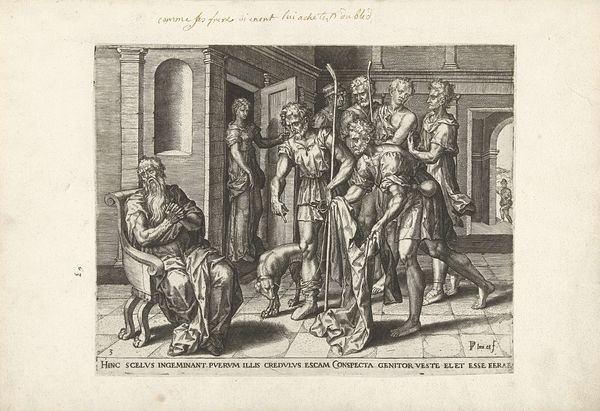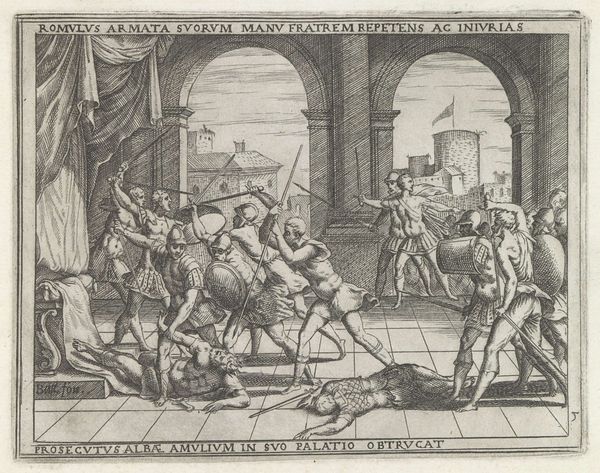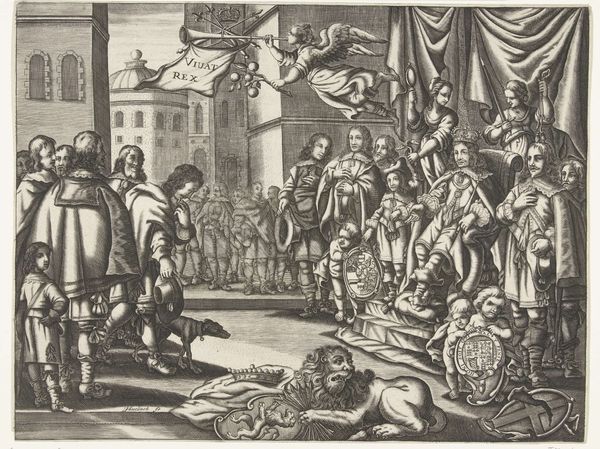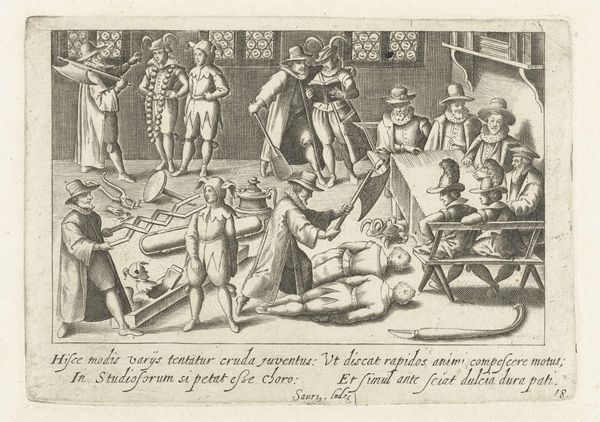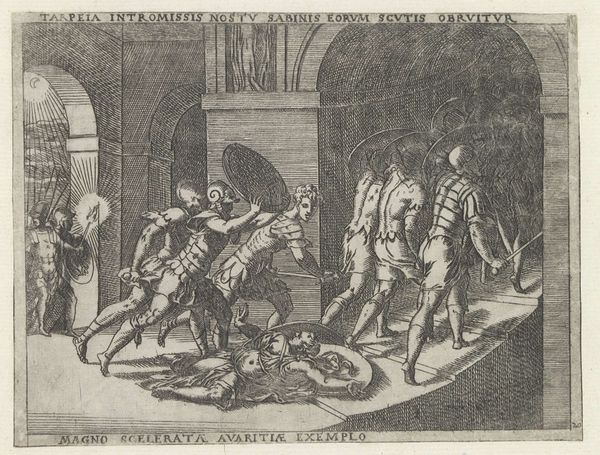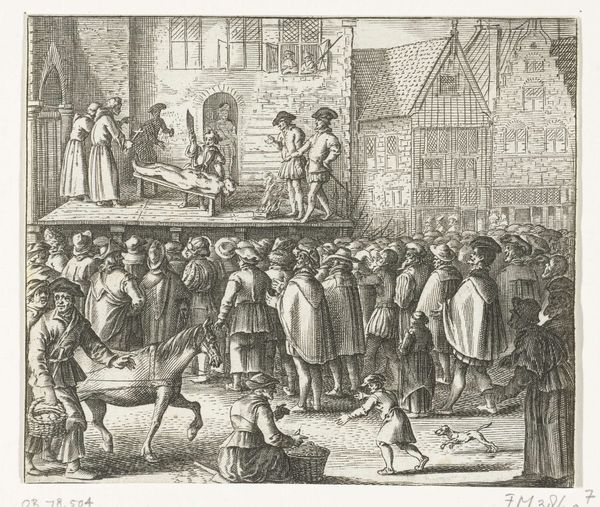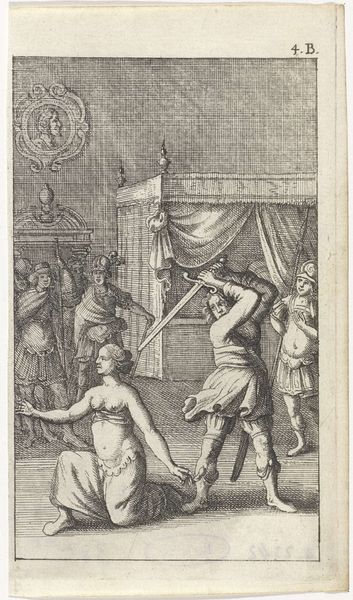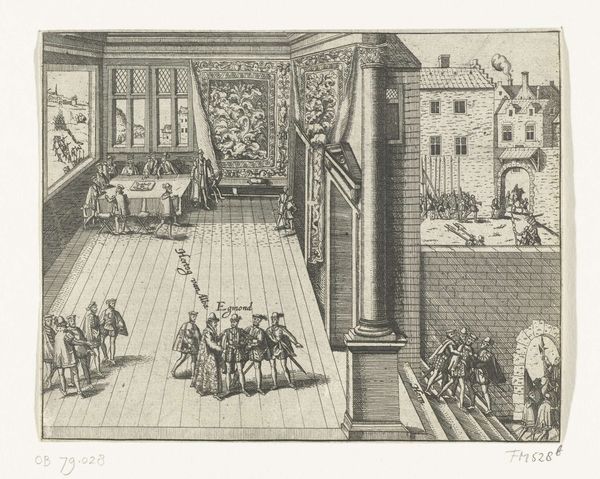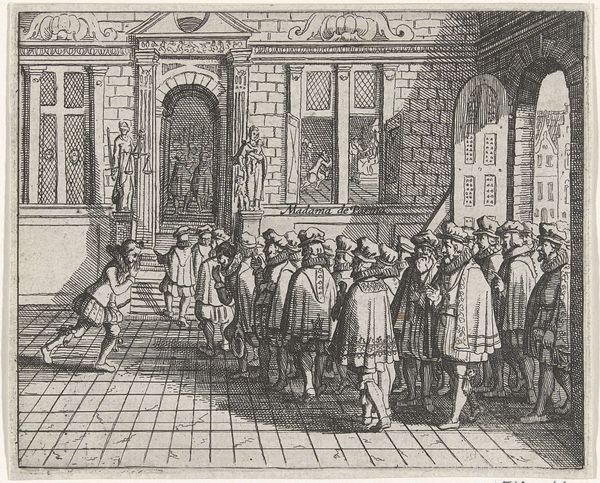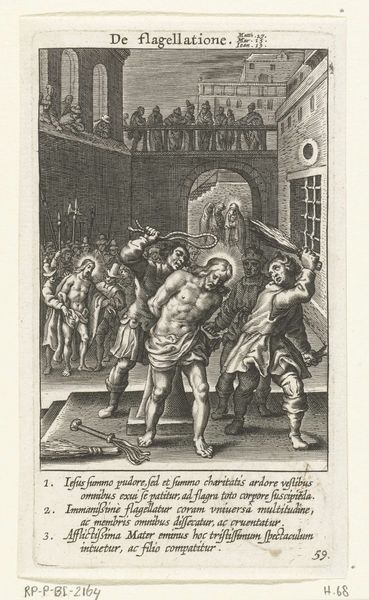
Jan Kruyze en Willem van Deutichem om beurten gestraft in de Wassenaarskooi te Hattem, 1520 1719 - 1728
0:00
0:00
print, engraving
#
medieval
#
narrative-art
# print
#
traditional media
#
caricature
#
figuration
#
line
#
genre-painting
#
history-painting
#
engraving
Dimensions: height 155 mm, width 187 mm
Copyright: Rijks Museum: Open Domain
Curator: Editor: Okay, next up we have "Jan Kruyze en Willem van Deutichem om beurten gestraft in de Wassenaarskooi te Hattem, 1520," a print from between 1719 and 1728. It depicts two men in a cage being hoisted up. It definitely evokes feelings of injustice and public humiliation. How do you interpret this work within its historical context? Curator: It's vital to see this engraving as more than just a historical record. It presents us with a very specific perspective on justice and power. Note how the figures pulling the ropes seem almost complicit, indifferent to the suffering displayed. What does that tell us about the normalization of punishment in that era? Editor: That's a great point, it does look like they're just doing their job. So it is a political statement? Curator: Precisely. It's an act of visual resistance, or perhaps even propaganda, questioning the legitimacy of the ruling powers. We have to consider who commissioned the artwork and what narrative they intended to construct. The injustice could highlight class differences and economic disparity in this society, couldn't it? Editor: That makes sense. I was so focused on the immediate image of punishment that I hadn’t really considered the layers of meaning behind it. Curator: This is precisely what makes engaging with historical art so powerful! It reflects not only the events themselves but the underlying societal structures that made those events possible. Think about the gendered implications of public shaming and spectacle here too... Editor: So much to unpack! I'll definitely look at similar works with fresh eyes now. Thanks for sharing this perspective. Curator: And thank you for your thoughtful questions. Let’s remember that history is never truly objective, it's about power, discourse, and how different groups understand and shape their own identities and politics.
Comments
No comments
Be the first to comment and join the conversation on the ultimate creative platform.

